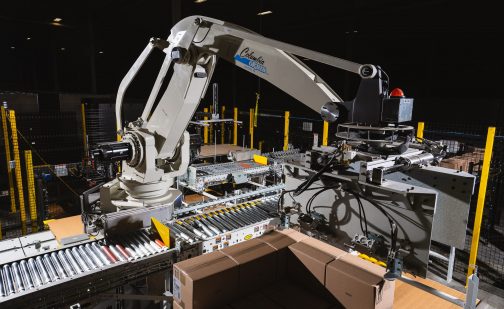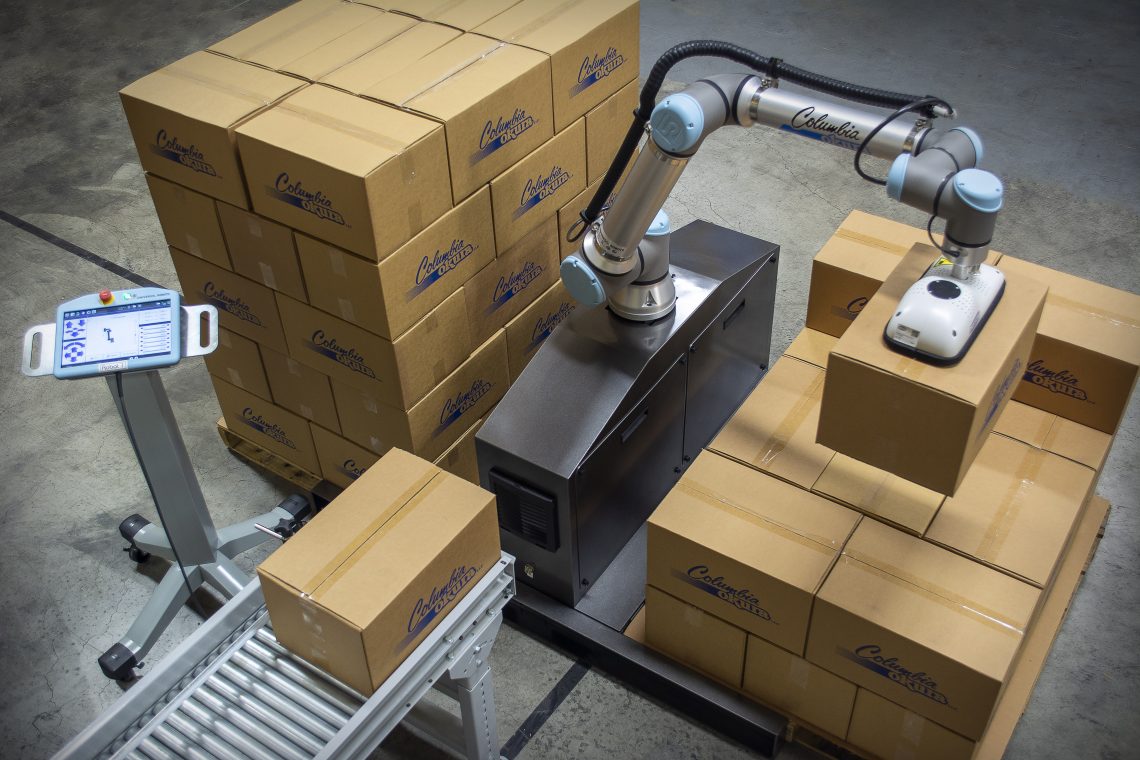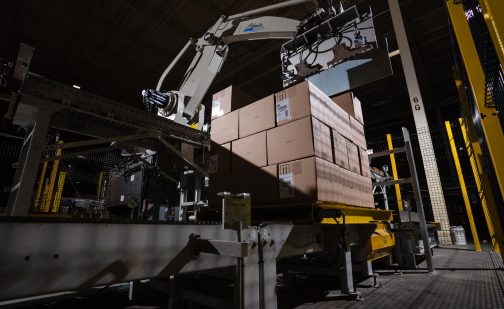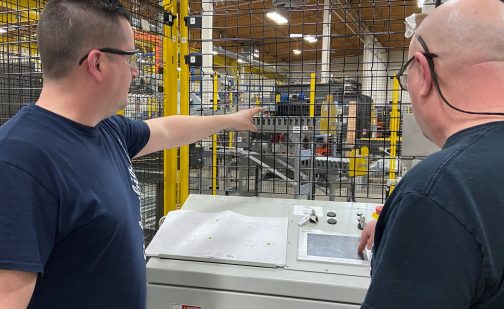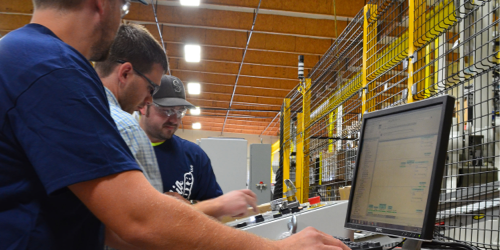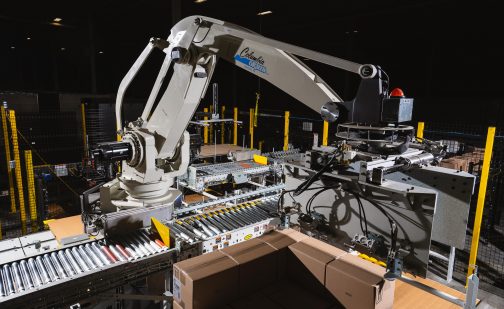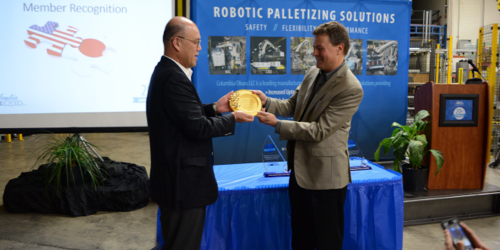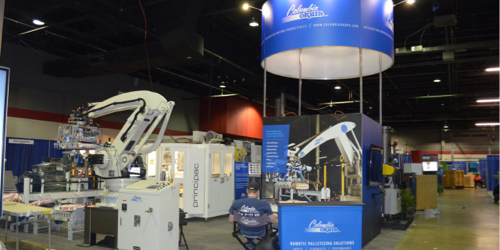Types of Robotic End Effectors (End of Arm Tools)
The infinite variety of end effectors is one attribute that what makes the robot such a versatile solution for palletizing. End effectors can be designed to handle multiple product types with a common tool. A robotic system designed for case palletizing can be transformed into a bag, pail, plastic tote, bundle or other package palletizing system without the need for an end effector change. This versatility gives the robotic palletizer a strong advantage over a conventional palletizer. A robotic system becomes a flexible investment capable of handling today’s packages and is capable of meeting future needs as well.
End effectors can employ different methods of product handling. These methods include, but are not limited to, clamp style, fork style, vacuum style and other custom designs.
Clamp Style – General purpose mechanical tool capable of handling a wide variety of products by clamping the sides of the package. This tool is capable of picking up and placing multiple packages at once when products are in the same orientation.
Fork Style – General purpose mechanical tool suitable for rigid, semi-rigid and non-rigid products that require support from beneath. This tool is capable of picking up and placing multiple packages at once when products are in the same orientation.
Finger Style – A mechanical tool that is most commonly used in handling product in bags.
Vacuum Style – Uses a vacuum system to pick product from the top. There are two primary types of vacuum heads: A full surface pad or individual vacuum cups arranged in a way to accommodate the needs of the palletizing system. The full surface pad is more universal and the vacuum cup type is more product specific.
Custom Design – Custom designed end effectors are the norm for most robotic palletizing integrators. However, “customized” standard tooling allows for better long term part support.

